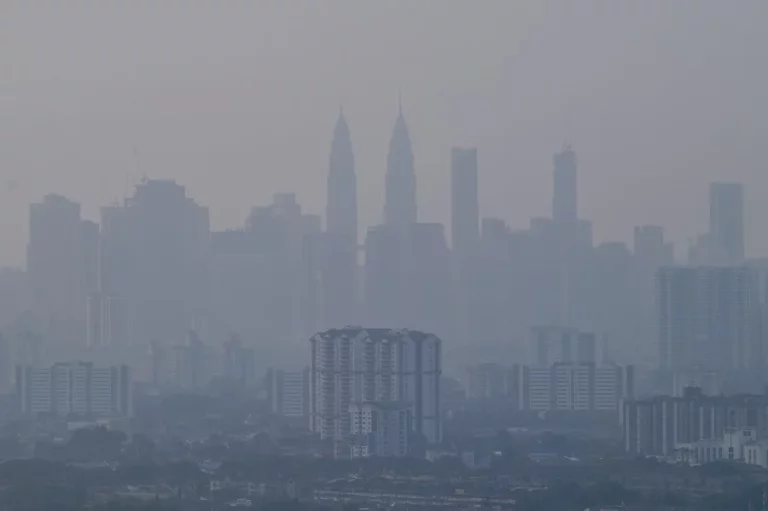By Mohd Noor Musa, Research Analyst, Institut Masa Depan Malaysia
Previous data and satellite images of peatland fires, illegal logging and deforestation induced by land clearing efforts in rural and agricultural areas of Kalimantan, Sumatra and Riau in Indonesia, by local and international agribusinesses, remain the main cause of haze in this region.
At its worst, when environmental conditions, such as El Nino, delay the onset of the rainy season, smoke from peatland fires and land clearing activities continue to intensify.
Besides the grave threat to health, especially those suffering from chronic conditions and the vulnerable, exposure to haze harms living resources, the fragile ecosystems as well as property, leading to violations of the fundamental human right to life and health and considerable financial loss to governments.
According to Greenpeace, around 110,000 deaths occur annually from pollution-related illnesses, stemming from haze. For instance, in 2015 the haze crisis caused the Indonesian government between US$16 billion to US$28 billion in losses and forced it to redirect air traffic and other repercussions.
Schools had to be closed and a state of emergency was declared in many areas as a result of the haze. In 2019, US$5.2 billion in damages and economic losses were reported, reflecting a 0.5 per cent loss in Indonesia’s gross domestic product (GDP).
The recent unhealthy air quality recorded in parts of Peninsular Malaysia and western Sarawak since Friday last week, where the Department of Environment (DoE) reported nine areas in Malaysia with unhealthy Air Pollutant Index (API) readings of between 101 and 200, leaves much to be desired.
According to the Asean Specialised Meteorological Centre (ASMC), based on surveillance from the NOAA-20 satellite, some 241 and 145 hotspots were detected in Sumatra on Sept 27 and 28, 2023, respectively.
However, the Indonesian government, through its Environment and Forestry Ministry, has denied the allegations, with its Environment Minister Siti Nurbaya Bakar saying Jakarta had not detected any transboundary haze from Indonesia spreading to neighbouring countries.
Global goals, such as the sustainable development goals (SDGs), particularly SDG3 on healthy lives and wellbeing, SDG11 on sustainable cities, SDG12 on responsible consumption and production, SDG13 on climate change, SDG15 on protection, restoration and promotion of sustainable use of terrestrial ecosystems and SDG 16 on providing access to justice, should be adopted by the affected Asean member states in galvanising support and in guiding their actions at the regional level.
These goals should provide a framework for shared action for the people, planet and for prosperity by all countries and all stakeholders who should act in collaborative partnership.
Having a good disaster risk management plan and well-coordinated efforts and commitment among related disaster management agencies at all levels and by local stakeholders will potentially lead to disaster risk reductions, enhance preparedness and responses and reduce the level of damage to assets and avert loss of lives.
Solutions to the annual toxic haze have been discussed among Asean member states for decades. The severe haze in 1997 and 1998 accelerated this process and led to the signing of the Asean Agreement on Transboundary Haze Pollution (ATHP) in 2002 by member states in Kuala Lumpur.
The ATHP, which was the first regional proposal in the world, aimed to mitigate and prevent haze pollution through concentrated nationwide efforts and sought to increase regional and worldwide cooperation. Its implementation requires, among others, that each member state enact appropriate domestic legislation.
Though Malaysia was the first country to have ratified the ATHP in 2002, until today, it has yet to enact its domestic Transboundary Haze Pollution Act. Indonesia, on the other hand, only ratified ATHP in September 2014. Until today, transboundary haze still recurs with no sign of a permanent solution.
Weak mechanisms in settling disputes and non-compliance are further compounded with the agreement’s obligatory provisions that do not specify any legitimate sanctions for non-compliance nor has it Asean constituted as an operative enforcement organisation.
Asean should reassess how to apply the principle of non-intrusion and resilient reaction to be adopted. Malaysia and other affected member countries should work together to resolve this problem, understanding the immense economic and public health damage the haze has already caused and will continue to cause.
Although the ATHP lacks enforceable mandatory provisions, it remains a strong instrument for regional collaboration to control transboundary pollution. The problem of transboundary haze should be jointly tackled via legal reform, political will and administrative coordination.
